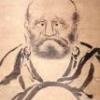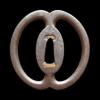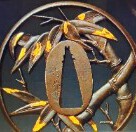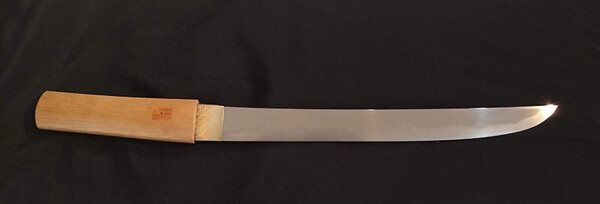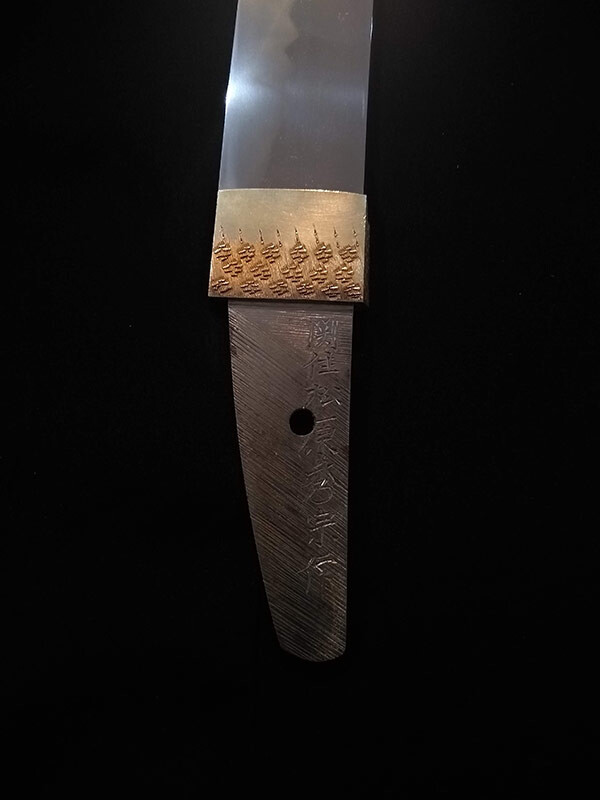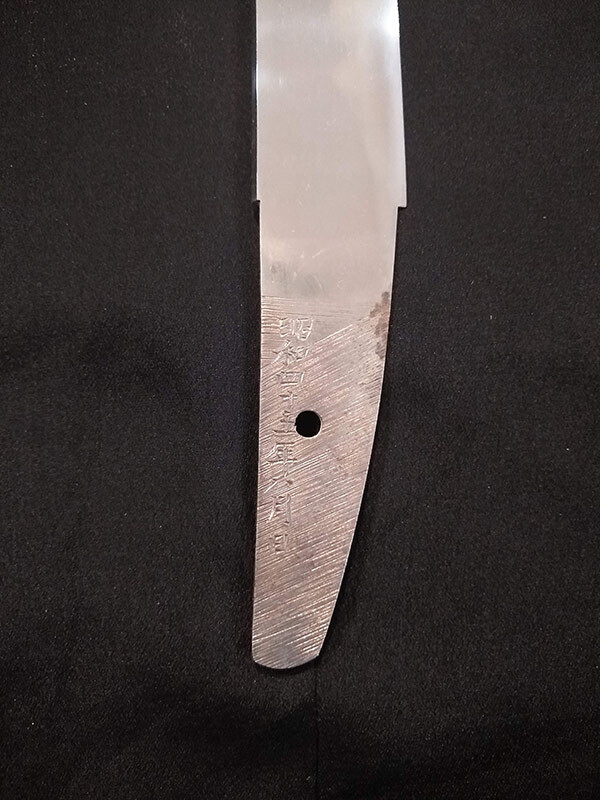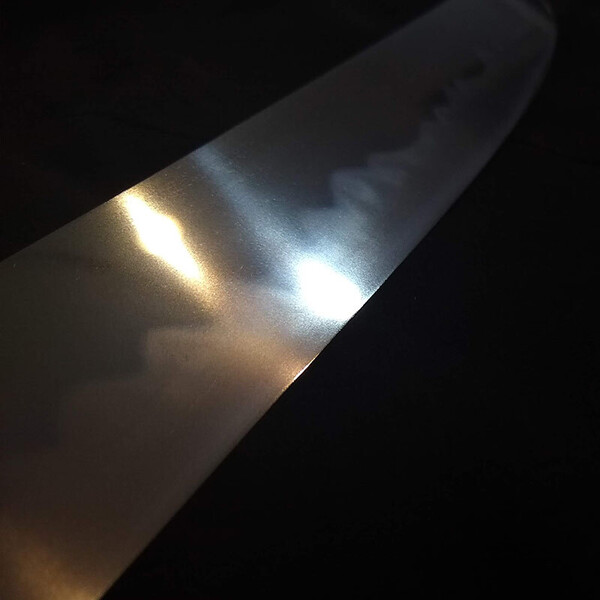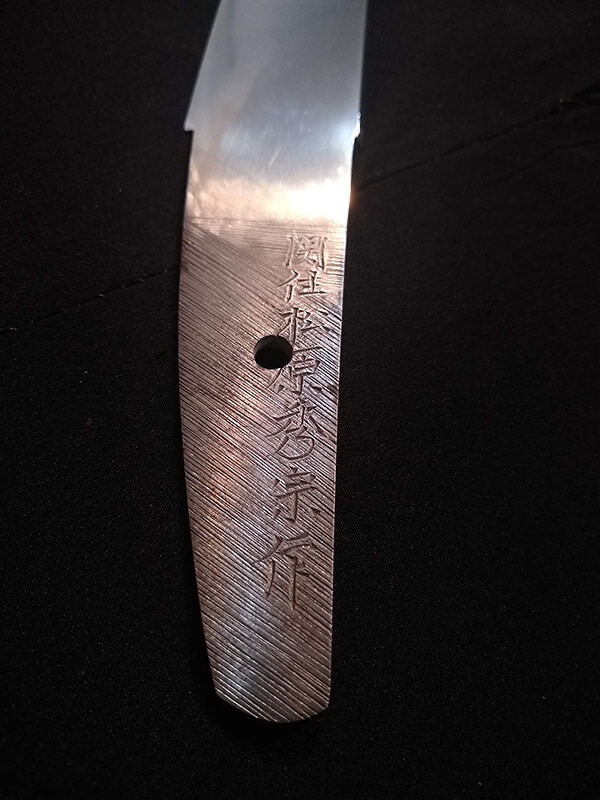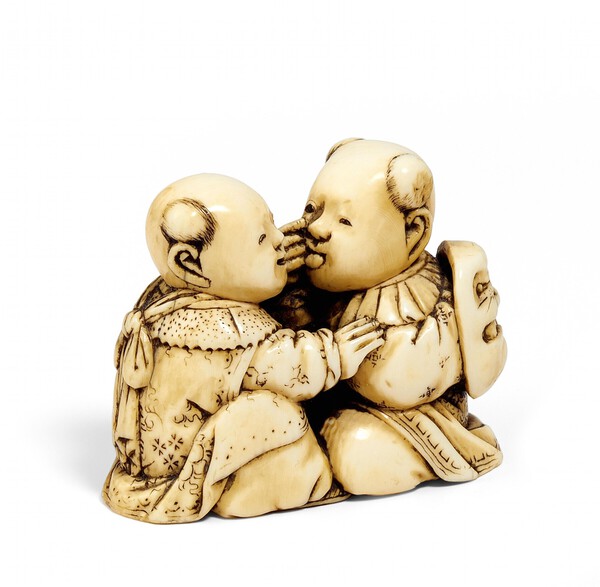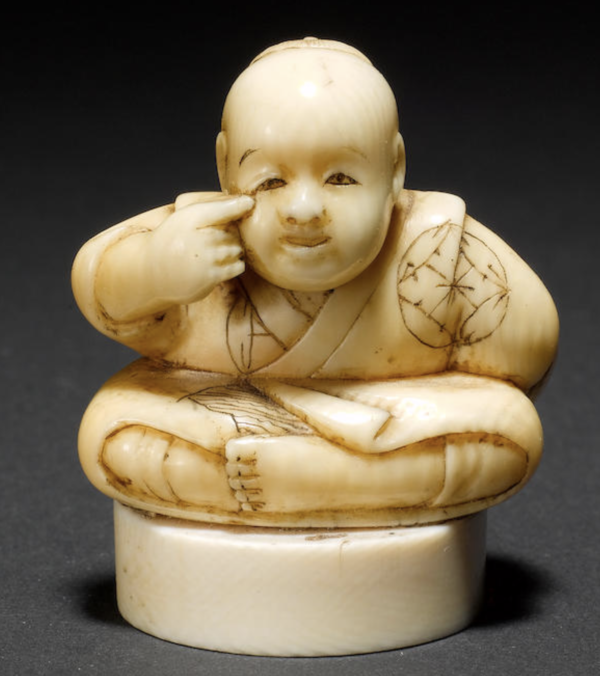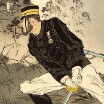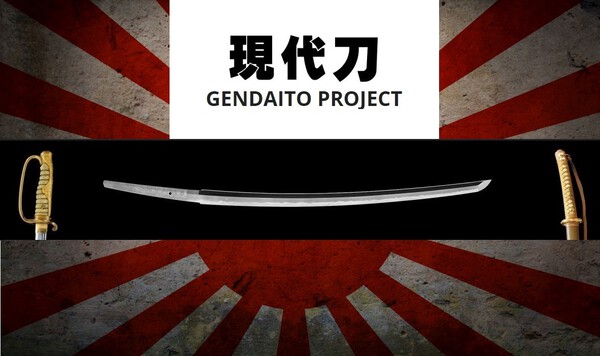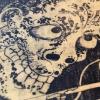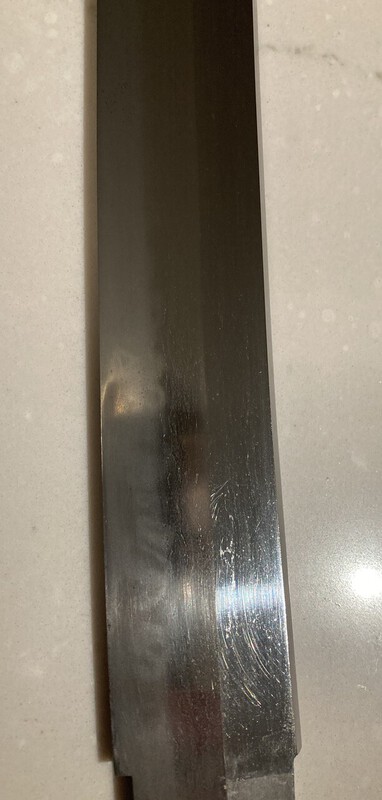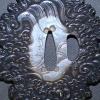Leaderboard
Popular Content
Showing content with the highest reputation on 04/21/2021 in all areas
-
This was just posted by Andrew Ickeringill ( @Andrew Ickeringill ) on Facebook, and I thought it was worth posting here, and pinning for the future. Andrew is a FULLY trained traditional polisher and one of the most qualified to make these statements. Before bringing up the subject on this forum, and risking a storm of fire, please read this and take it to heart. Amateur sword polishers… I know you probably won’t listen, but I’ll try anyway. Recently, I’ve been seeing more and more rubbish from amateur polishers on the internet, it’s not a new problem, but with social media being what it is, amateurs have been given a platform where they can prosper. It’s beyond frustrating, it’s infuriating, and it's working directly against what I'm striving for, the preservation of Nihonto. I’ve had to correct the damage caused by amateur polishers many times, and the damage is always severe. Correcting these hack-jobs takes a lot of work, and it means removing more steel than would’ve otherwise been necessary if the blade had previously gone to a traditionally-trained togishi. A traditional apprenticeship in togi takes years to complete for a reason, THERE’S A LOT TO LEARN! It means giving up everything else to spend your time in servitude to Nihonto. My apprenticeship was 12 hours a day / 7 days a week / for over 6 years, and even my spare time (what little I had) was usually spent studying nihonto. But if you want to be a togishi, this is the way it must be, you have to go all in. Through arrogance or ignorance or both, amateur polishers have completely forgone this necessary training. Some of them may have attended seminars in Japan, or visited a togishi for a few days… but this obviously doesn’t equate to traditional training. And for many amateurs, the bulk of their training consists of reading books and watching youtube videos of swords being ruined without a clue. Unfortunately, these videos receive plenty of misguided encouragement from those who don’t know any better… “wow, so shiny!”. Amateurs will often argue… “this sword isn’t worth sending to a pro, should we just leave it to rust?”… but how would THEY know? They haven’t been trained in kantei, they have no idea if a sword is worth a professional restoration or not. A cold chill passes up my spine every time I think about this, how many great swords have been ruined by amateurs? I know I’ve already seen a few in my time. If you’re an amateur polisher reading this, let me give you a tip… this job is not for you. This isn’t something that should be attempted by anyone but a traditionally trained togishi, and if you haven’t realised this fact by now, then you need to develop more respect for Nihonto and the craftsmen who have worked their butts off to complete the proper training. Please stop scraping the life away from these works of art, you’re doing far more damage than repair… this job is not for you!18 points
-
Alive, still. @Neil: I saw that you wrote me a PM and apologize for not having replied (looking at the board on a regular basis, but hardly logging in, and the notifications go to my old email address, so I have to change that). I am still working on the Gendaito Project, but I wish I had met the full goal of donations back then to take that time off to bring the project to the finish line. About 1/4 was met, for which I am very grateful, and after so many years, I totally understand all the frustration, so if anyone wants a refund, I am happy to to do so. I have mentioned at some other occasion that at the moment, and going forward, I am working on what I call my "legacy," which is, newly researched monographs on each of the swordsmith and sword fittings schools published as individual (smaller, and thus less pricy) books. This will not be chronological and I have decided to make the Gendaito Project part of it and publish it as one of the first books in the series. Due to the number of Gendaito smiths, there might even be two volumes, and the website with all the pictorial references that can not go into the book(s) will be there as well. Now working remotely for the museum a full year (and 2,5 years in total), and living in a small town in North Carolina, going back to NYC becomes less and less attractive, also because no decision has been made yet if my position becomes permanent, as Assistant Curator, or not. This means, if that does not work out, and it might be so as it currently appears, I will have full time again to 100% focus on the backlog.7 points
-
Hi all, I am trying to make contact with Markus Sesko. Many of us have forked out big bucks to help him research and write a treatise on GENDAI SWORDSMITHS, and to pre-purchase an edition. I write this on behalf of many people who have contacted me with the same request. Firstly, I hope nothing untoward has befallen Markus, but if things are OK with him, I think we are at least owed a progress report, a copy of what we paid for, or if the project has been aborted, a financial refund. It has now been years in the making. First prize is, as far as I am concerned, is a completed edition. As this work would be great reference material. Failing that, well, I would like my money back.5 points
-
贈 福井 兄 Gift of Fukui is correct. 兄 is probably a first name (Kei) but its an unusual first name. It could also mean "brothers", as in "Gift from the Fukui brothers". Hard to say, but in any event, it indicates the sword is a gift.3 points
-
Moriyama sama...thank you very much. I would not have found that information. What you have found makes good sense. In Mar. 1942, Tsukamoto Masakazu is listed at Amida-cho 1....his brother Kiyokazu is listed at Yatsuhashi-cho (or machi) 6. Yatsuhashi is IN Amida-cho (now called Motomachi)...it is a railway workshops area that still stands. I think both brothers may have been in the same workshops area because Masakazu is also listed at Yatsuhash-cho 10 in Mar. 1944. So, both working in town, ON the railway line where they can receive supplies easily and can ship out their finished swords....The shed seems to have had at least 24 workshops...Kiyokazu in #6 and Masakazu in #10. Only the name of the area has changed from AMIDA to MOTOMACHI. Here is a pic of Yatsuhashi yard and also of the portion of the workshops that still stands (in very poor coindition), more than half has been demolished. I think it should be kept as a RJT forge that people can visit.. Great find Moriyama san...I will do some more work and let you know if I find any more INFO. I did suspect that this sort of answer was likely correct, especially as I knew that both brothers were in the same workshop by 1944 , but It is great that I now know where my sword was made. Regards,3 points
-
3 points
-
Mei on kogatana are seldom the smith. More like a tribute. Won't have anything to do with tanto.2 points
-
贈福 井 兄 Oku fuku [i kei] This may be a chumon mei (ordered by) Mr Okufukui, but the first two kanji also mean good luck gift...so it might mean something else. You need a better linguist than me to fill in the gaps. Again, sorry for not reading your post properly and adding pretty much zilch to what you already had.2 points
-
Dear Craig, Instead of mon, I think that the dots (one central dot surrounded by multiple smaller dots) are lichen. That is how they are generally depicted in Japanese art. So if they are lichen, then these would be rocks instead of mountains. The "S" shaped "path" is also a stylistic way of depicting water in a stream in Japanese art, so I think your idea of mossy rocks in a stream is probably correct. Here are lichen on a tree:2 points
-
This is a very large and wide hirazukuri wakizashi by the gendai smith Matsubara Hidemune. He was born Matsubara Ryuhei in 1930 and likes in Gifu, Japan. This blade is a beautiful piece of work with a very wide o-gonome hamon with ashi and thick kinsuji running throughout. The mihada is wide and the blade has a solid silver habaki in a koke-style. Jihada is a very fine ko-itame with ji-nie. The Hidemune is in shirasaya and very nice polish which is almost perfectly intact, except for one spot in which is looks like someone has cleaned a stain with uchiko (shown in the photos). $3,500 (plus shipping & PayPal) Best regards, Ray2 points
-
This should be permanently linked in the Nihonto Info section as its own category and also under care as well.2 points
-
Dear Bob, Number 29 is a very rare subject on tosogu. It is the Akambe Game being play by two boys, and the boy on the kashira is doing the Bekkako gesture (pointing to his eye or pulling down his lower eyelid meaning "do you see any green in my eye" while slightly sticking out his tongue). When playing this game, a mask (Okame or other Noh character mask) is often hidden, so there may be a mask on the other side of the fuchi or perhaps on the menuki or tsuba. While they are very nice and expressive, I think that your instincts are correct about them not being Joi level... Here's the subject on netsuke:2 points
-
2 points
-
Please take a look at the link below. The Gendaito Project is still going strong and after my second announcement, I really got much data from you guys over the last couple of years. This is very much appreciated and more information will follow in couse of the planned crowdfunding campaign when I'm back from Europe at the end of February. Thank you for your attention! https://markussesko.com/2017/02/07/gendaito-project-2/1 point
-
Would anyone be so kind as to post a/the page from John Scott Slough’s book showing the information and oshigata for the sword smith Kanetoshi? Shoka Kanetoshi or Murayama Kanetoshi - I’m guessing Murayama based on the “flamboyant” choji hamon and also this blade has some very nice hada (which I understood as somewhat rare in Gendai blades - please correct me if I’m wrong.) There are several examples of a Kanetoshi mei online, but all are significantly longer. I was unable to find an example in nijimei. The nengo looks rather “sloppy.” My shot at translation was Sho-Wa-Ju-Roku-Nen, but I can’t figure out what that correlates to. Another question would be regarding the green ito. It seems that gunto with green ito are few and far between. Am I wrong about that? As always, thank you so much. I am grateful for your expertise and help.1 point
-
Guys and Gals, crazy Bob is at it again with .99 cent starts, so Trumpin what you may ask. Well, If you win the bid I will rebate you a stimulus of 10 pct off the winning bid. Wad up wid NMB you know me. Can you say Crazy Bob for Prez in 2024! Check out these Camp Lejeune area gems. Best regards, Bob P.S. there are some nice hard to find bayo's up in a few days too if you need one for your Arisaka http://ebay.us/K586Az?cmpnId=5338273189 http://ebay.us/vAQKJl?cmpnId=53382731891 point
-
Which I assumed was contemporary. Seller states over 300 years old. Your take ?? https://buyee.jp/item/yahoo/auction/x7767518621 point
-
The smith’s signature is Tsuda Omi (no) kami Sukenao - it’s a big name if genuine. The date runs too cursive for me to make out, but if it matches this smith’s known activity will be in the second half of the 17th century. If you are able to post some close-up shots of the blade you might get a view on whether the workmanship matches the signature. I see Geraint has weighed in whilst I’ve been writing so apologies if I’ve duplicated what he said.1 point
-
1 point
-
1 point
-
鶴見住小川昭清作 栗原彦三郎昭秀門入 Tsurumi-jū Ogawa Akikiyo saku Kurihara Hikosaburō Akihide monnyū Made by Akikiyo Ogawa of Tsurumi, apprentice of Kurihara Hikosaburō Akihide1 point
-
Hi George , Re your Item No. 29 background information post , Thanks for all the explanations - I for one, had never heard of this game . Presumably all Japanese adults know it.... I wonder if the gestures get used much. Best Regards1 point
-
Brian Just my $0.02 worth, but I'd keep the wak (very nice) any day over a fancy modern Russian folder (and I'm primary a knife guy). Rich1 point
-
1 point
-
源包治作 Minamoto Kaneharu saku. Sorry Dan, didn’t read your post properly.1 point
-
Hi Grev, Thanks for posting - this must be the first and earliest evidence of the' Mutant Ninja Oni' cult then ? Best Regards1 point
-
Fairly long sword, only slightly suriage (I think), double bo-hi on one side, single bo-hi on the other... this could be interesting.1 point
-
Hi Bob, The blade doesn’t look like a wartime blade to me - I’d guess it to be older than that. I’m not saying it’s a lost treasure, but it looks more interesting than a normal gunto. Unfortunately, it’s hard to date it precisely without being able to see the detail, so sorry to send you back to your camera but if you are able to post some detail shots of the hamon, the tip and any evidence of the metal having been folded ie grain pattern, you’ll probably get some better answers. I can’t add anything about the fittings so I’ll leave that to the gunto guys.1 point
-
Thanks again, I didn't get back to it yesterday. My Dad always said it was from a Japanese Major. Once I get it apart, etc then I want to get an honest/accurate appraisal done. I probably should have it insured.1 point
-
1 point
-
Dear Dale. For what it is worth I see too many differences for these to be called a daisho, apart from the base material and the seppa dai design. e.g. detail of the tail at one o'clock, carving of the mimi, detail of the dragon head at 12 o'clock, sinuosity of the tail at 9 o'clock and so forth. I would suggest that the kinko version is a pale imitation of the quality of the iron example. Not all daisho koshirae have what we might call a true daisho pair of tsuba. I can recall a daisho where the smaller tsuba was a lacquered pair to the larger which clearly had been done when the daisho koshirae was produced. I think you are right when you suggest utsushi or what in other circles might be called school of. All the best.1 point
-
1 point
-
G'day Guys, Here are some more photos. The koshirae is in almost pristine condition. The saya is the lacquered wood kind which I think is quite rare. What makes this sword really stand out is the beautiful, two piece, gold and silver foiled habaki. Unusually the fittings which are the mid-war type, are not numbered or marked in any way. The boshi is ichimai style with a long kaeri. The only down side is the blade is suriage and machi okuri. Cheers, Bryce1 point
-
I would assume various motifs as on this tsuba would make the work creating it a lot less tedious than just the perfect nanako.1 point
-
1 point
-
1 point
-
So, I mentally struggle a bit with that concept of brittleness causing the ochoji hamon to subside. Theoretically that makes sense of course, but such hamon was produced for around 30-40 years (roughly 1230-1270). If it was brittle and ineffective, it would have disappeared within 1-3 years, maximum 5-10 years. Yet, we see several decades of obusa choji, juka choji, fukuro choji, etc. People often cite the Mongol invasions (1271/84) as watershed moments after which the large choji came out of fashion. Indeed, that is evident in the work of Nagamitsu and Kagemitsu. Their progenitor, Mitsutada, started off with small hamon rendered in konie in the fashion of KoBizen smiths. Then he evolved to beautiful kawazuko and ochoji in nioi in mid 1250s. At the same time, the same happened to Fukuoka Ichimonji guys like Yoshifusa and Sukezane.1 point
-
1 point
-
Brian Wise choice. I'll bet that fancy Shiro doesn't cut any better than my SAK Tinker or Rough Ryder flipper (both about $20 each) Rich0 points
-
0 points
-
0 points
This leaderboard is set to Johannesburg/GMT+02:00



